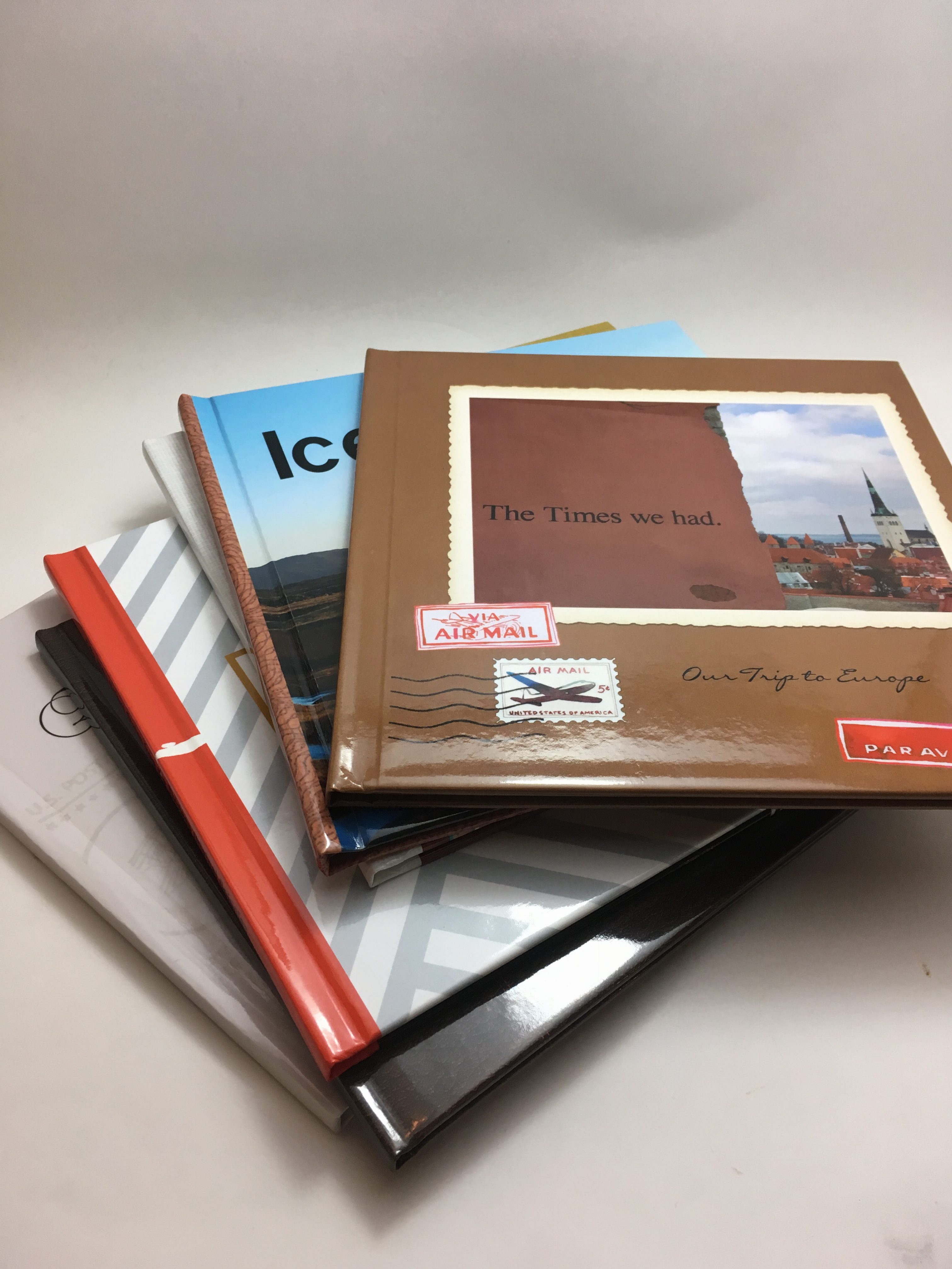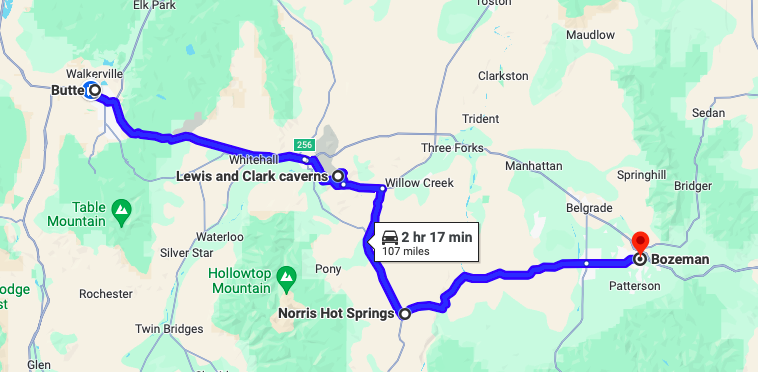I’ll begin this post by saying flat out–I hate writing in a journal. I never do it in ordinary circumstances. I know I should and that all of the reasons I am about to put forth for why you should keep a travel journal can apply just as well to non-travel days, but I can’t help it. Now, some people (like C & B) enjoy keeping journals and have done so consistently for years. This is great–these people won’t take much convincing that they should document their adventures. If you are like me, though, you might need some extra motivation. Here are five reasons you should keep some sort of travel journal to document your adventures:
- Remember where you visited. This might sound silly, but once you catch the travel bug, you tend to travel a lot. And the trips begin to all blend together. Strange as it sounds, it becomes conceivable that you visited a place when you really didn’t. When I was working on crossing off my 50 states list, I couldn’t remember the exact route my dad and I took on an epic road trip across the U.S. I pulled out my travel journal from that trip and realized I had missed Michigan and Ohio and would need to go check them out before I could check them off.
- Remember how good you used to look. Do you guys look back at old pictures of yourself and think, ‘man, I was skinny’ or something to that effect? It’s a sad piece of human nature, but we never seem to think we look good at the present time. If you print out a travel book or pictures, you will always have proof that you were h-o-t when you went to Cozumel.
- Remember the funny stories. This is probably my favorite part about travel journals. Trips are usually action packed and you see and experience a lot of things along the way. Stories that are fresh in your mind a week ago might be a little fuzzy in a year and completely forgotten in a decade. B and I love going back through our travel journals and reminding ourselves of funny things that happened to us along the way. If you are ever feeling blue, you can read your travel journal to laugh and perk yourself up.
- Show people what you saw. My family likes to see the pictures of my trips and since I don’t print the actual photographs anymore I can just show them my photo books. B complies her photos into electronic albums and sends friends and family a link.
- Have proof in future debates about what actually went down. My parents are hilarious when they get reminiscing about stories in the past. Their versions are usually contradictory on one point or another and they just keep plowing forward with their own version rather than yielding to the recollection of the other. If you write down the story when it happens, you can go dig out your journal and stick it to your friend/spouse/sibling in inevitable debates in the future.
Now that you’ve seen the light and have decided you will heretofore document your travel, you might wonder about the best way to do this. The good news is there are several options. If writing isn’t your thing, you can choose to do mainly photos. If you like to wax poetic, you can pick a medium that is mainly narrative. As I might have mentioned, I’m not terribly fond of keeping a journal, so I’ve tried several options to see what works best for me. Here are four ways to do it; I usually opt for one or two of them for each trip.
Kick it Old School: Journal
B picks out a conveniently-sized journal before she leaves for a trip that will be her travel journal. This way she can be sure to have a something that won’t take up too much space. C prefers to type her journal on her phone, that way she doesn’t have to carry anything extra around. My style is to wait until I get to a destination and then pick up a journal locally, thus getting a journal and keepsake all in one. This sounds great–but can be a real pain in the butt. We have wandered around many a cities looking for notebooks.
Pros: writing down your experiences allows you to describe your thoughts, feelings and experiences. It is probably the most complete way to document your trip.
Cons: writing down your experiences takes a long time. If you don’t enjoy journaling, it can feel realllllly tedious.
Summary: You should keep track of what happens to you on your trips. You can try lots of ways to do this; at the minimum you can just jot down notes. Whatever method works best for you, you just have to suck it up and do it, for the reasons mentioned above.

Photo Books
There’s a few dark days after I get home from a trip where I’m putting together a photo book. Lots of companies do these; I typically use either on Shutterfly or Picaboo. You can choose to mix text and pictures with photo books and if you put in the time you can make really great keepsakes. If you only put in some of the time, like me, you can make a perfectly marginal keepsake.
Pros: photo books are relatively easy to make. The two companies I’m most familiar with have very similar design tools that make it easy to drag and drop pictures. They have template pages to give you ideas of what to do and cute backgrounds and themes to make your books look good. Also, when you print them they are very small–I usually go with an 8×8 inch square that is only about a third of an inch thick. I only make a photo book when I have a coupon, which happens pretty often if you are on the email lists. I typically get a coupon for a free photo book so I only have to pay shipping, which is usually about $10. If you don’t have a coupon they can be pricey, around $30 or $40.
Cons: I get super aggravated when I’m making a photo book because I am impatient and I know I could be doing a better job with the tools at my disposal. I suppose that is a con for my personality and not for a photo book…hmm. Text can be challenging with photo books because they are designed mainly for pictures. I once transcribed my great uncle’s memoir using a photo book (essentially publishing it) and I about ripped out my hair getting the text and margins to behave. The more pages you add, the more expensive it will be. I keep mine to the 20 pages because that is what is allowed on the coupon, but this means I can only add so many pictures.
Summary: traditional photo albums have gone the way of the dodo bird. Photo books have taken their place as the best way to have a hard copy of pictures from your trip. If you really hate writing in a journal, a photo book might be a happy compromise for you; you can have pictures with short descriptions.

Electronic Albums
B has used Picassa for years to curate her photos and share them digitally. She’ll add short descriptions of what is happening in the pictures and save it all out in the interwebs world. Since Google retired Picassa, B has begun using Google Photos. The concept is the same. B just has to send out a link to her albums and people can access the photos.
Pros: This method is free-ninety-nine. If you use a crazy amount of storage, companies might try to make you pay for usage, but there are so many sites out there now and will be in the future that I don’t think we really have to worry about that. Since the pictures are all digital and stored in the cloud, if your house ever burned down or was ransacked you will still have your electronic picture album. Another pro is that you can share your photos with many different people both near and far. Former roommate living in NYC? Check. Mother living two hours away? Check. Coworkers in another office? Check.
Cons: since it is electronic, you have to have an electronic medium to see/share them. If you are ever without an internet connection or phone or computer, you can’t access them. I really like having tangible pictures; after all the time I put in on electronics during the day, I like having something static in my hands.
Summary: an electronic photo album is a cost-effective, easy way to store and share photos digitally.
Apps and Websites
The latest wave of travel documentation is via apps and websites, like TravelPod and TravelDiaries. Both of these (and others) are a mixed platform where you can map your route, type text and add pictures. You can leave your trip in an electronic form or print it out. I much prefer TravelDiaries to TravelPod, but I know an avid user of TravelPod.
Pros: as hybrids, these apps/sites are good at both pictures and text. You can also do cool things, like pin places you’ve been on a map, quite easily. Most let you save your album for free in a digital form, so you don’t have to pay anything unless you want to print.
Cons: because they are hybrids, they do pictures and text well, but don’t do either great. There is much more flexibility to adjust photos and layouts in a photo book than on these. They can get expensive if you are combining everything all in one. My latest TravelDiaries product cost me about $50 (although it was being sent to me from the Netherlands…perhaps that inflated shipping prices). You have to have an internet connection to use the apps and websites (obvs) to their fullest potential. I ended up taking notes during my last trip and compiling a TravelDiary when I got home, which probably means I forgot some really good moments from my trip because I didn’t write them down when they just happened.
Summary: apps and websites are slick, user friendly, and will most likely only get better as more people use them. Their capability to mix writing and photos make them very attractive. However, sometimes I don’t want everything combined. When I see my grandma in a few months and show her pictures from my last trip, I’m not going to want to show her my journal also. Instead, I made a photo book and will keep the TravelDiary to myself.

Conclusion
Travel isn’t just about when you are actually on your trip. Planning and reminiscing can also be a lot fun. To reminisce to the fullest extent, you need to keep some sort of documentation. Whatever means you choose (sorry scrappers, we didn’t even go into that!), just make sure you do something. Even if it is painful now, you’ll thank yourself down the road.






Leave a Reply